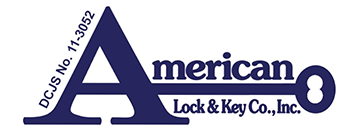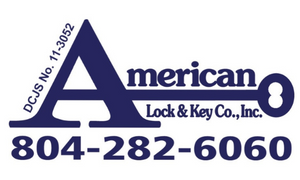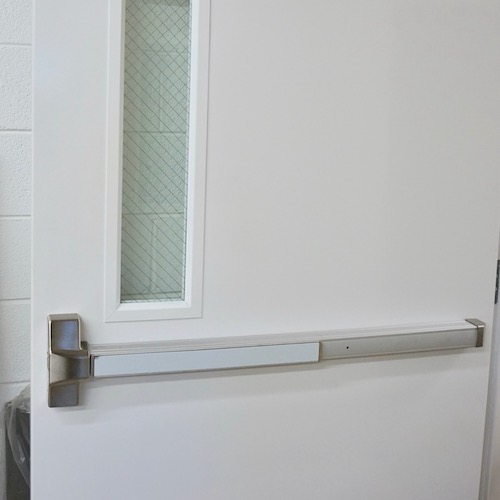Panic devices, also known as crash bars or panic bars, are critical for ensuring safety in commercial buildings. These devices allow people to exit quickly and safely during emergencies, such as fires or security threats. Understanding the role of panic devices can help business owners improve safety and comply with legal regulations.
What Are Panic Devices?
Panic devices are horizontal bars installed on the interior side of doors. They allow people to unlock and open doors with a simple push. These panic devices are commonly used on emergency exit doors in commercial and public buildings.
Key Features:
- Operate without keys or additional tools.
- Automatically unlock doors when pushed.
- Designed for high-traffic areas and emergencies.
Why Panic Devices Are Essential
Panic devices are essential for safety and compliance in commercial spaces.
Benefits:
- Fast Exits: Panic devices allow people to exit quickly during emergencies.
- Reduced Injuries: Their simple operation minimizes confusion and crowding during evacuations.
- Improved Safety: Panic devices ensure doors remain secure but accessible in emergencies.
These devices are critical in schools, offices, retail stores, and other high-occupancy spaces.
Legal Requirements for Panic Devices
Building codes and safety regulations often require panic devices.
Common Requirements:
- Occupancy Limits: Buildings with high occupancy, such as theaters or schools, must have panic devices on exit doors.
- Fire Codes: Panic devices ensure compliance with fire safety standards by allowing rapid egress.
- ADA Compliance: Panic devices must be accessible to individuals with disabilities.
In many areas, failure to install panic devices can result in fines or penalties.
How Panic Devices Improve Emergency Preparedness
During emergencies, panic devices simplify evacuation procedures:
- Quick Operation: People can exit with minimal effort, even in stressful situations.
- No Need for Keys: Panic devices do not require keys or special knowledge, reducing delays.
- Durable Design: These devices withstand heavy use and ensure reliability during emergencies.
Types of Panic Devices
There are different types of panic devices to suit various building needs.
Common Types:
- Push Bars: Standard horizontal bars that unlock doors when pushed.
- Touch Bars: Sleek, low-profile bars for modern buildings.
- Alarmed Exit Devices: Include alarms to alert staff when the door is used.
- Electrified Devices: Connect to access control systems for enhanced security.
Choosing the right type depends on your building’s layout and security requirements.
Installation and Maintenance
Proper installation and regular maintenance ensure panic devices function correctly.
Installation Tips:
- Hire a professional locksmith to ensure compliance with safety standards.
- Place devices on all designated emergency exit doors.
- Test devices regularly to ensure smooth operation.
Maintenance Tips:
- Inspect for wear and tear.
- Test alarms or electrified features periodically.
- Replace worn or damaged components immediately.
Panic Devices and Security
Panic devices do not compromise security. Modern designs integrate with access control systems, allowing secure entry while maintaining safe exits. Alarmed devices can alert staff if unauthorized use occurs, ensuring both safety and security.
Why Businesses Need Panic Devices
Commercial spaces must prioritize occupant safety. Panic devices provide a simple and effective solution for ensuring safe evacuation during emergencies. Businesses without proper panic devices risk fines, lawsuits, and endangering lives.
Ensure Safety with American Lock & Key
American Lock & Key provides expert installation and maintenance of panic devices for commercial properties. Our DCJS-licensed technicians ensure compliance with local codes and safety standards. With over 44 years of experience, we help businesses in Richmond, Henrico County, and surrounding areas stay safe and secure. Contact us today to schedule a consultation or learn more about panic device solutions.


